Greetings fellow travelers,
Thousands of subscribers from the US, Europe, Central Asia, and Africa have been asking for my favorite books on screenwriting. I was in the middle of writing that post, scheduled to drop bright and early Sunday morning, so y’all could enjoy it while having your coffee and bagel. But something’s been bothering me and interfering with my flow; so, I had to stop what I was doing and address the flow-breaker.
Anthony Morganti @
wrote a terrific post on Oct. 9th about why he was beginning to hate his favorite photography genre – street photography. Street photography is my favorite genre too, and although I commented on the post and sort of got that nagging sensation out of my system, I couldn’t stop thinking about it. Still can’t. It’s nothing new, by the way. In the nutshell: When does it become not ethical to take photos of strangers on the street, or in a subway, or in another public space?Here's the gist of Anthony’s post. Street photography is often exploitive. Yes, it’s perfectly legal to photograph people in public spaces without their permission, but is it okay to get into people’s faces and ruin their day because you want to get a perfect shot?
This video from the popular YouTube channel Paulie B’s Walkie Talkie featuring Trevor Wisecup changed Anthony’s attitude about street photography. Why? See for yourself.
Trevor is a talented photographer, but he thinks he’s God’s gift to the world. He’s here to “document”our lives for posterity and “express” himself in the process. It reeks of entitlement and desperation. He gets a kick out of getting into people’s faces even if he knows that’ll ruin their day; but he also knows how to pull back, and when. In other words, that whole street song-and-dance is more about Trevor Wisecup than about the folks he photographs. I don’t know the guy. He might be super-nice, and what he’s doing is just an act. Be that as it may, I understand why he pisses many people off, including some fellow photographers.
But there are others, more thoughtful folks out there shooting on the street. Here's another episode of Paulie B’s show that I found today; this one stars Reuben Radding.
Reuben, a photographer and teacher, is far more respectful in his approach. He shoots “from the hip”, or “from the chest”, or “from the side”. In other words, he doesn’t get into people’s faces. But he doesn’t ask for permission to take their photo either.
This photographer (and Anthony mentions him in his post), Daniel Emuna, does.
So, here’s the central question of Anthony Morganti’s post:
Is it necessary for street photographers to seek permission from their subjects before taking their photos?
I’m torn on this. Street photography is all about being in the moment and catching the moment to be in when it presents itself. When you ask someone for a permission, that moment is ruined. They begin to pose even if they pretend not to. Did the great street photographers – Gary Winogrand, Saul Leiter, Vivian Maier – ask for permission to photograph? Maybe, occasionally. But most of the time they probably didn’t.
My inner critic, Freddy, has chastised me numerous times over the years for catching people in their most private moments, especially on the subway, and then posting those moments on social media. My defense has always been “Isn’t that what street… uhhh… subway photography is all about?”
But when Freddy asks, “Yo, at the end of the day, what’s more important to you, invade someone’s privacy and ruin their day, or ask for permission and ruin the perfect moment?” It’s a rhetorical question and he knows it. It’s the latter, of course. And yet, and yet…
I try to take photos that don’t ruin people’s day because, most of the time, they don’t even know I took them. I hope I’d never take a photo of someone in a deeply vulnerable situation, a homeless individual, or anyone with the intention of portraying them negatively. Sometimes it’s hard to resist, but I’ve been able to do it so far.
And besides, I love taking photos of people from different angles, especially from behind. I learned that from Saul Leiter (If you haven’t seen the documentary about him, you should). A person’s back is at least as interesting as their front. Yes, you invade someone’s privacy even if you take a photo of their back. But then… I dunno… you might as well give up photography and start knitting or learning how to bake cookies.
Having said that, I’m starting to learn how to ask perfect strangers for permission. Take this child in a shopping cart. I smiled and approached the mother.
“May I take a photo of your boy? He looks so cool in that cart.”
“First of all, it’s a girl. And yes, she’s beautiful.” She looked at the child and said, “Sweetie, can you give this nice man a big smile?” The girl did, I took the photo, and everyone went home happy and content.
And I definitely asked Kelcy for her permission to be photographed. A future librarian, she was on her break, in the library, reading.
‘Til next time,
AK



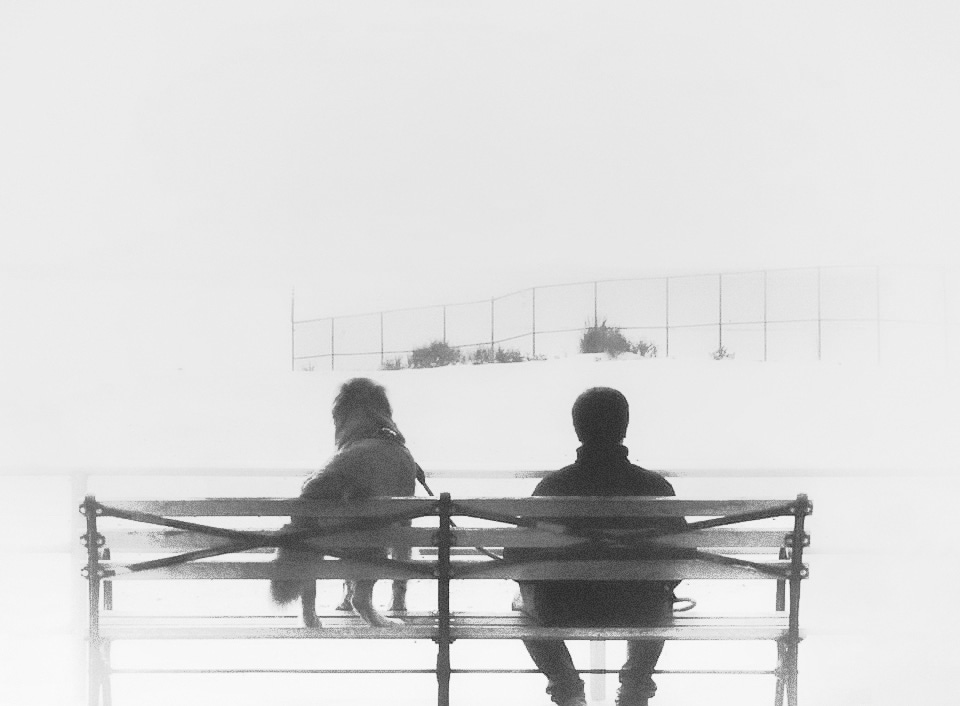
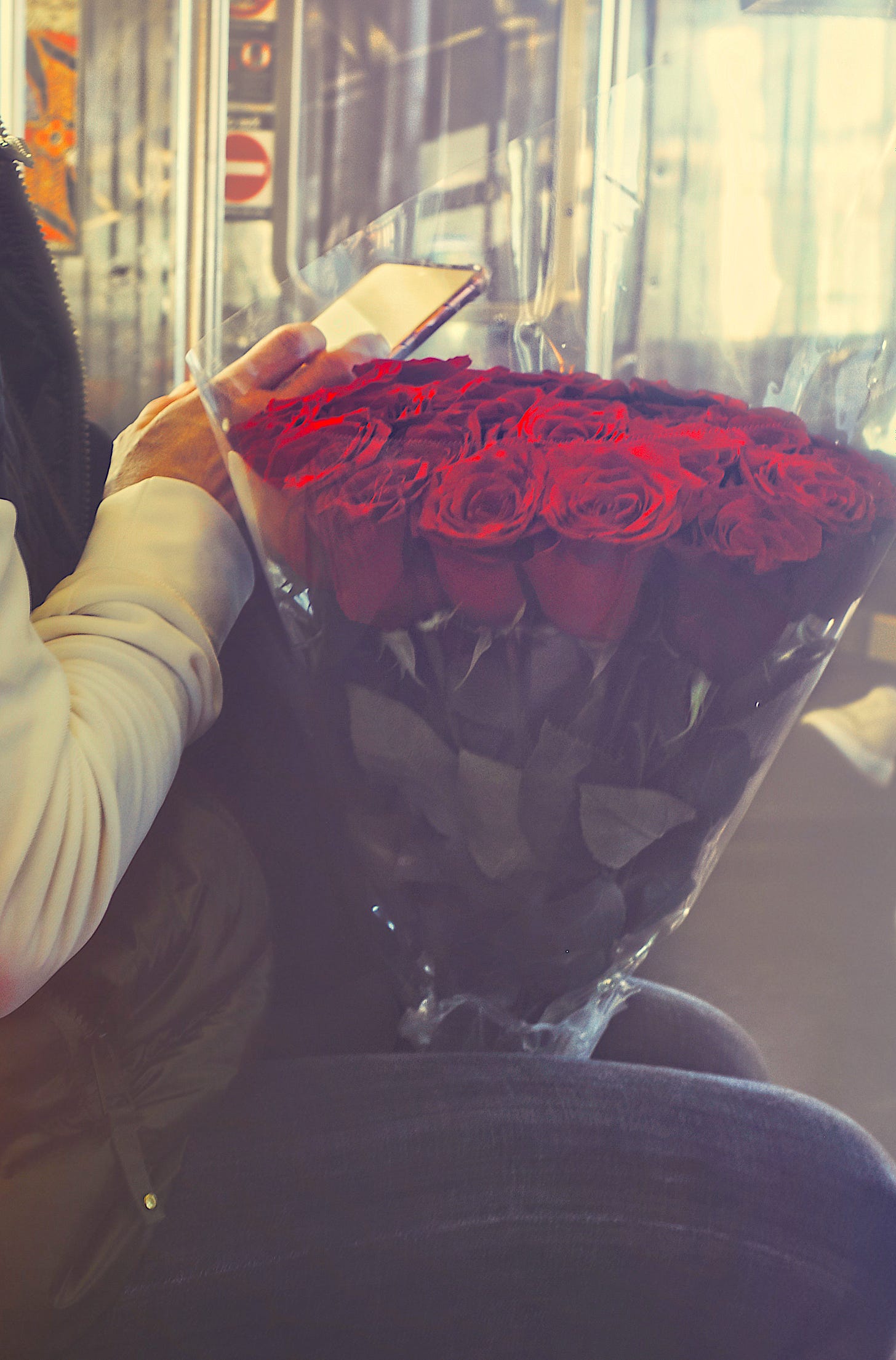
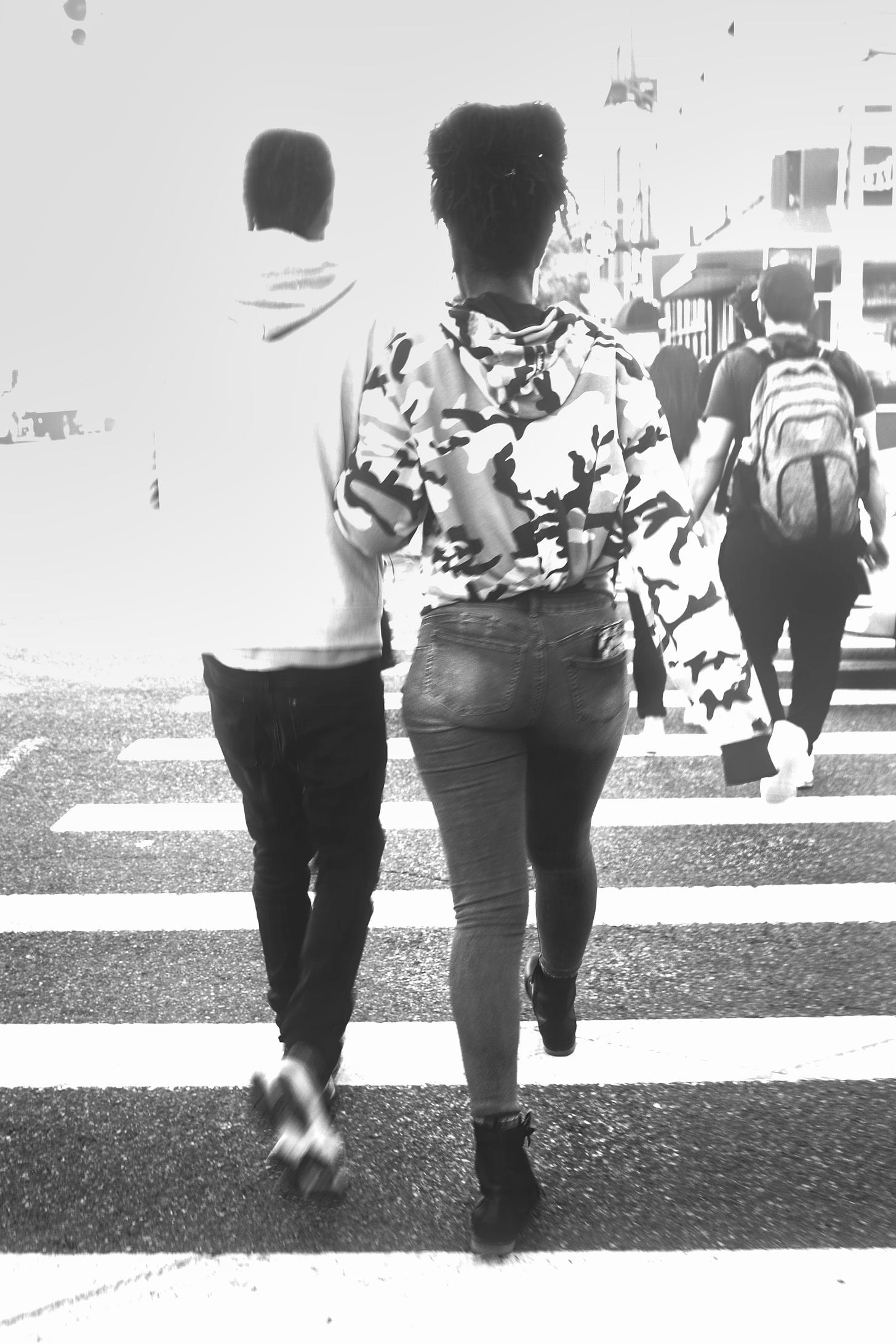
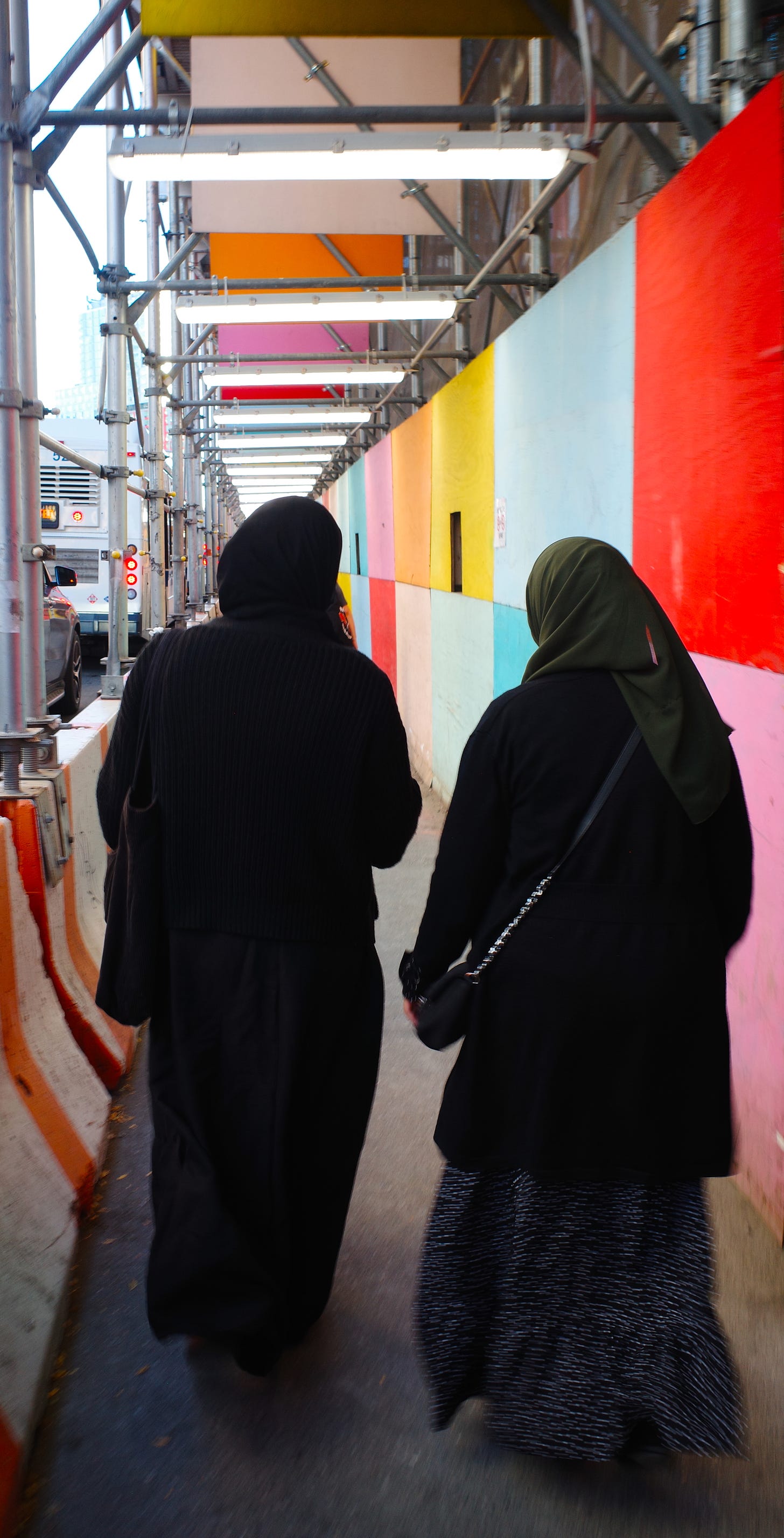
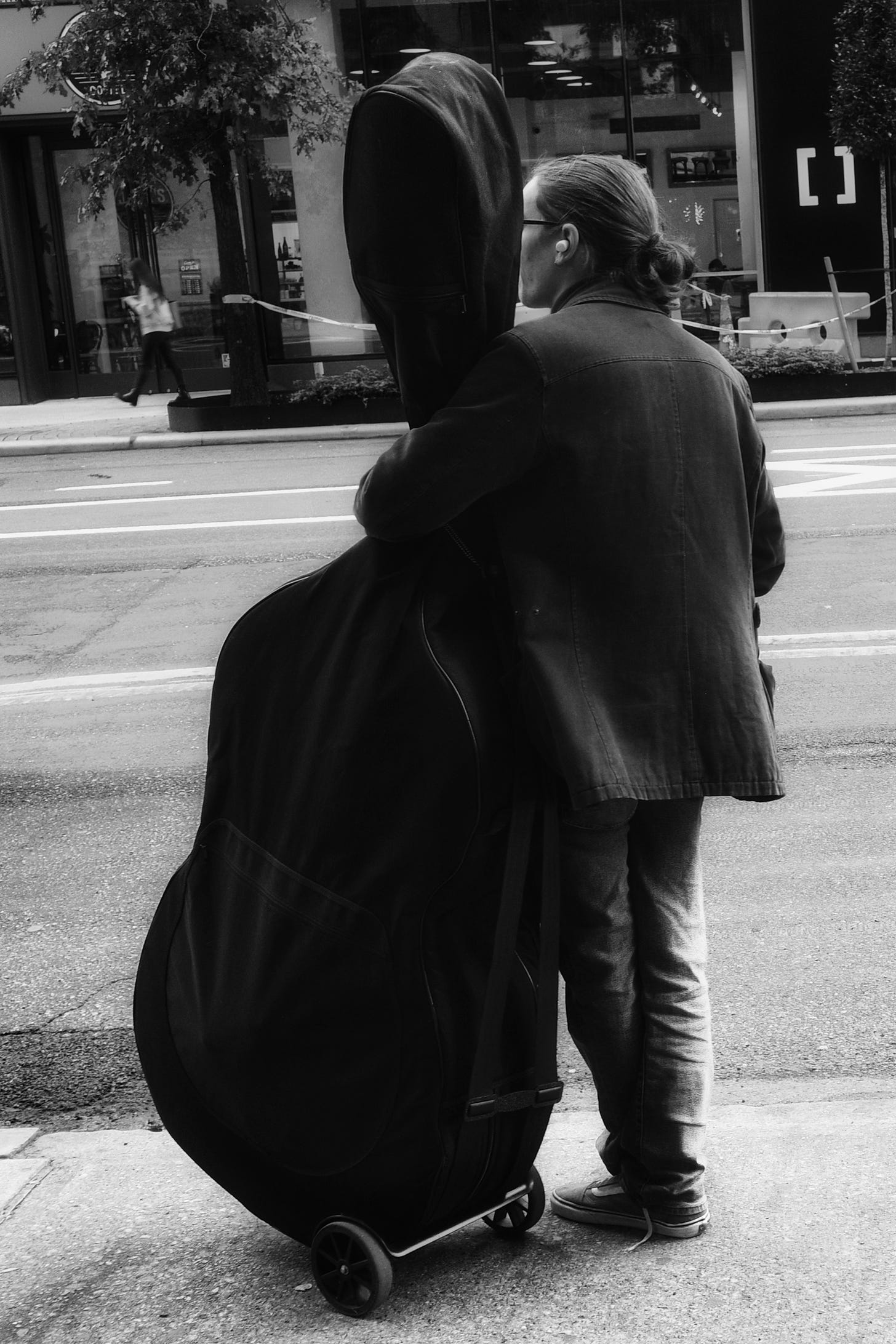
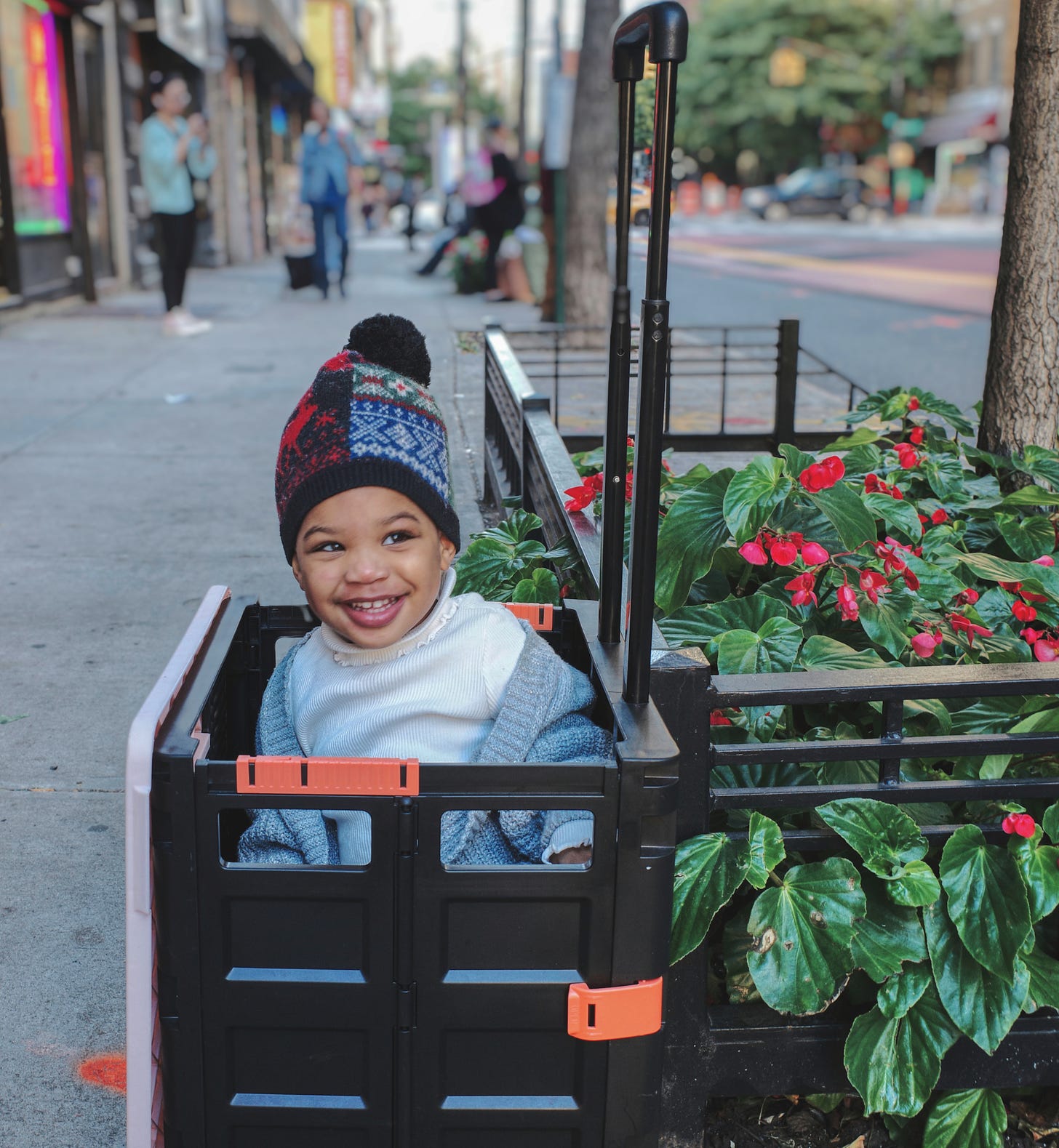
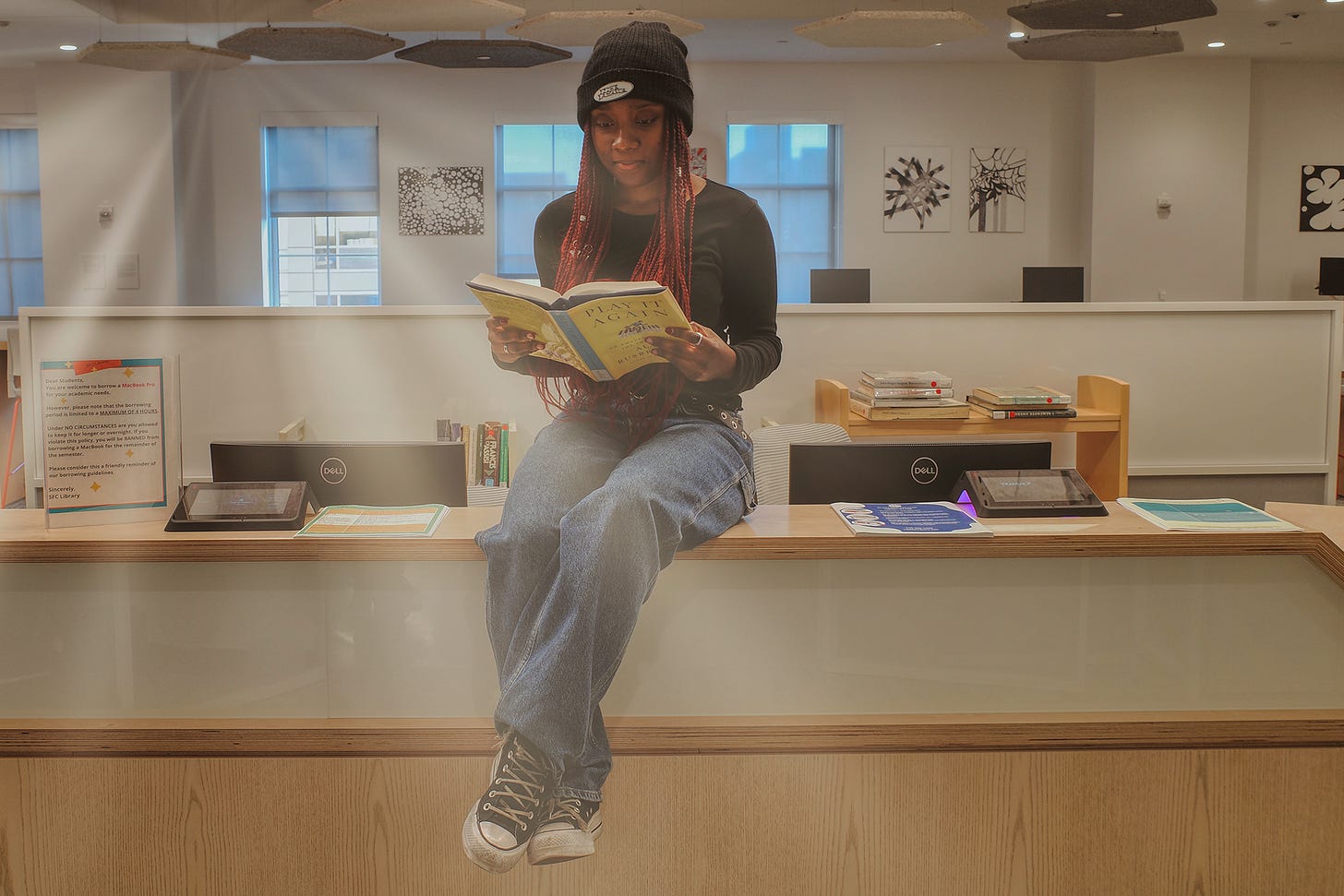
Yes, you’re probably correct. I know I’m guilty of taking photos of Hasidic Jews. I have lots of them. It’s partly because the Hasidim look differently, but also because they have a tangible otherworldliness about them, at least to me.
I make YouTube videos where I film and show my street photography from here in Korea. I’m trying to show other photographers how you can shoot street without bothering anyone, as well as non-photographers that being photographed in public can be a positive thing. After 10 years of shooting street, I find engaging with everyone in a happy manner, greeting them and being willing to chat has offered me more opportunities to photograph than it’s ever ruined.